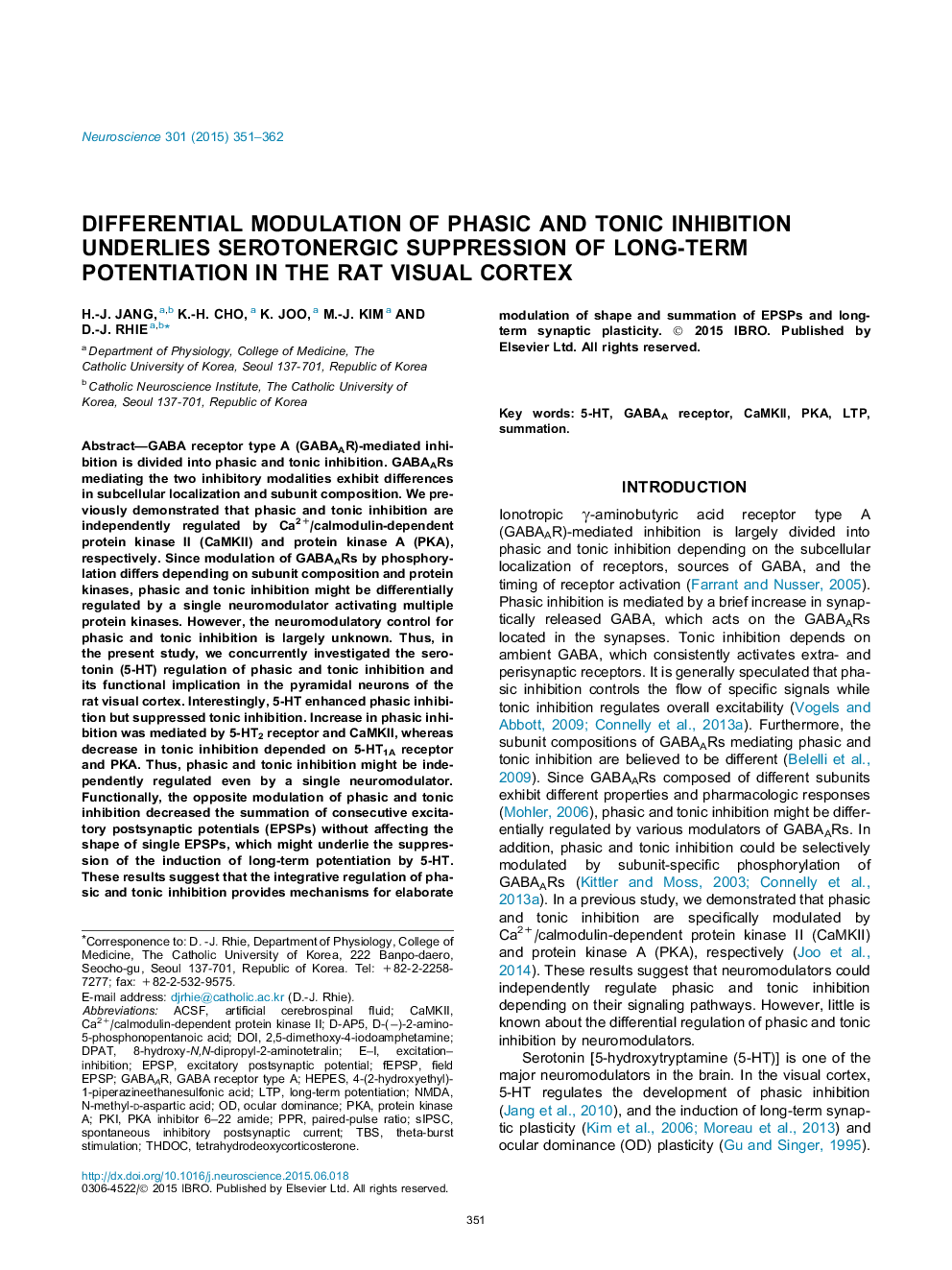| Article ID | Journal | Published Year | Pages | File Type |
|---|---|---|---|---|
| 6272088 | Neuroscience | 2015 | 12 Pages |
â¢Effects of 5-HT on phasic and tonic inhibition were investigated.â¢Phasic inhibition was enhanced via 5-HT2 receptor and CaMKII.â¢Tonic inhibition was suppressed via 5-HT1A receptor and PKA.â¢The effects underlay the suppression of the induction of long-term potentiation.
GABA receptor type A (GABAAR)-mediated inhibition is divided into phasic and tonic inhibition. GABAARs mediating the two inhibitory modalities exhibit differences in subcellular localization and subunit composition. We previously demonstrated that phasic and tonic inhibition are independently regulated by Ca2+/calmodulin-dependent protein kinase II (CaMKII) and protein kinase A (PKA), respectively. Since modulation of GABAARs by phosphorylation differs depending on subunit composition and protein kinases, phasic and tonic inhibition might be differentially regulated by a single neuromodulator activating multiple protein kinases. However, the neuromodulatory control for phasic and tonic inhibition is largely unknown. Thus, in the present study, we concurrently investigated the serotonin (5-HT) regulation of phasic and tonic inhibition and its functional implication in the pyramidal neurons of the rat visual cortex. Interestingly, 5-HT enhanced phasic inhibition but suppressed tonic inhibition. Increase in phasic inhibition was mediated by 5-HT2 receptor and CaMKII, whereas decrease in tonic inhibition depended on 5-HT1A receptor and PKA. Thus, phasic and tonic inhibition might be independently regulated even by a single neuromodulator. Functionally, the opposite modulation of phasic and tonic inhibition decreased the summation of consecutive excitatory postsynaptic potentials (EPSPs) without affecting the shape of single EPSPs, which might underlie the suppression of the induction of long-term potentiation by 5-HT. These results suggest that the integrative regulation of phasic and tonic inhibition provides mechanisms for elaborate modulation of shape and summation of EPSPs and long-term synaptic plasticity.
